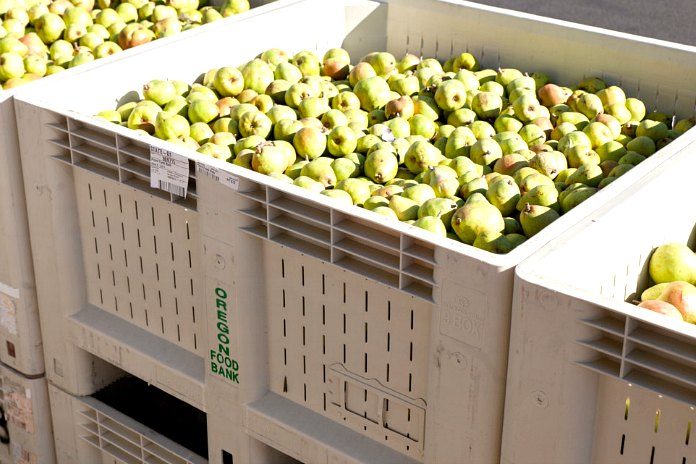
For several months, employees of the Oregon Department of Agriculture have volunteered some of their own time to repack produce or sort pallets of food at Marion Polk Food Share in Salem, often bringing their spouses and kids as part of the work crew.
The experience is rewarding but also much needed. Oregon remains one of the nation’s hungriest states. ODA’s efforts are just one of many in which generosity is hopefully going to turn the tide.
Overall food donations, including an increase in the amount provided by agriculture the past few years, is more than just appreciated. It is a key strategy of Oregon Food Bank’s response in helping the 1 in 5 Oregonians experiencing hunger.
We are serving about 270,000 people a month through our network of 21 regional food banks and partner agencies around the state, and that doesn’t count all the other Oregonians who don’t tap into the network,” says Katie Pearmine, Strategic Sourcing Manager for Oregon Food Bank (OFB). “I have the best job in the world, which is facilitating generosity. I get to move the generosity of our agricultural community to the generosity of our regional food banks and agencies to the clients who are experiencing hunger. There is not a community more generous than our farmers, ranchers, and fishers.”
Oregon Food Bank has developed a lot of new relationships with agricultural producers, processors, and the retail food industry. Farmers and ranchers alone provide about 57 percent of OFB’s food supply. Food processors and major grocery chains fill in part of the remaining gap. The US Department of Agriculture’s Emergency Food Assistance Program (TEFAP) plays a large role as well.
Those Oregon Food Bank trucks motorists see on the highways and freeways across the state are often doing double duty. They take food items from OFB’s central distribution center in Portland to local and regional food banks around Oregon but many times will bring something back in the form of donated food from the field. The backhauling has created an efficient system that taps the ag community’s efforts.
“We capture both storage crops and seasonal crops,” says Pearmine. “We have a budget and know there is excess in parts of the food system. We want to capture all of the blood, sweat, and tears that goes into these crops that might end up staying in the field or head off to a dehy (dehydration plant) or juice market.”
There are numerous examples of how the field to food bank linkage works.
Trucks going to Pendleton return to Portland filled with apples from farms such as Lefore Farms in Milton-Freewater and Walter Wells and Sons in Hood River. Both are family farms that provide several truckloads of apples throughout the year. OFB pays a small fee– comparable to juice market prices– to offset the packaging and production costs for those apples.
Nearly all year, River Point Farms in Hermiston donates half a trailer with about 20,000 pounds of onions every week. In Klamath County, Wong Potatoes and Malin Potatoes make sure OFB trucks come back with fresh spuds. Donated pears from Harry & David in Jackson County or Diamond Fruit and Duckwall Fruit in the Columbia Gorge are a weekly backhaul item. Bellinger Farms in Umatilla County provides several truckloads during watermelon harvest. Threemile Canyon Farms, the large dairy in Morrow County, provides beef in the form of 22 cows per month, which translates into 5,000 pounds of hamburger each month.
Donations of food commodities have poured into partner organizations like Farmers Ending Hunger (FEH), which then feeds into Oregon Food Bank. Nearly 4 million pounds of food donated annually by farmers and ranchers has been funneled to the food bank through FEH.
With representatives of agriculture participating as part of the Oregon Hunger Task Force, the ties between those who grow the food and those who are in need are becoming stronger.
At the state agency level, ODA staff are among many participating public employees doing their share to help put a dent in Oregon’s hunger crisis. Whether it’s contributing to the annual Governor’s State Employees Food Drive or spending a few hours each month at the local food bank, there is a wide recognition of Oregon’s dubious distinction of being a hungry state – and it’s everyone’s responsibility to work towards a solution.









